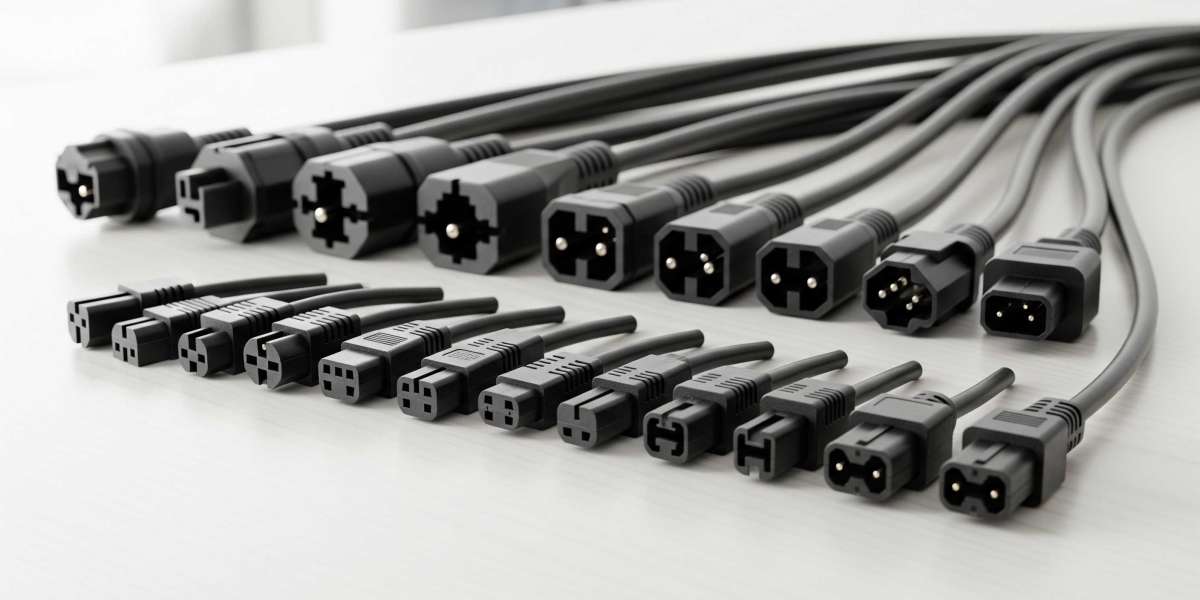Every day, you see electronic devices like computers, monitors, and printers all around you. But have you ever wondered how they get power safely from the wall outlet? That’s where an IEC power cable comes in. These cables are the quiet heroes connecting your devices to the electricity they need to work.
In this guide, you’ll learn what an IEC cable is and explore the many ways it’s used—from homes to offices, data centers, and even medical devices. We’ll keep it simple and easy to understand, just like explaining it to a 12-year-old.
What is an IEC Power Cable?
An IEC power cable is a standardized electrical cable made according to rules set by the International Electrotechnical Commission (IEC). These rules make sure the cables fit devices safely, carry the right amount of power, and work well everywhere in the world.
You’ve likely seen an IEC cable if you’ve looked at the power cord for your computer, monitor, or printer. The IEC cable usually has connectors named by codes like C13 and C14, which describe the shape and type of the plugs on the cable and device.
The Exact Answer: What is an IEC Cable Used For?
An IEC cable is used to safely connect electronic devices such as computers, monitors, printers, and other appliances to a power source, ensuring reliable and standardized power delivery.
These cables are designed to fit specific device sockets with matching IEC connectors, so you get a secure and safe power connection every time.
Common Uses of IEC Power Cables
1. Computers and IT Equipment
One of the biggest uses of IEC cables is in computers, laptops, and related devices.
They connect desktop computers to wall outlets or power distribution units.
Monitors and printers also use IEC cables to get their power.
In data centers, servers and networking equipment rely on higher-rated IEC cables like C19/C20 for safe, powerful connections.
2. Office Electronics
IEC cables are a staple for office machines such as:
Scanners and fax machines.
All-in-one printer devices.
Telecommunication devices.
These cables help keep office setups neat and standardized.
3. Audio and Video Equipment
Many audio systems, professional video setups, and home theater devices use IEC cables to connect safely to power.
Their standardized connectors make it easy to swap cables if needed, even for high-quality speakers or amplifiers.
4. Home Appliances
Certain household appliances also use IEC cables, especially those needing detachable power cords for safety and convenience.
Examples include:
Microwaves
Refrigerators
Electric kettles (using heat-resistant IEC cable versions like C15/C16)
5. Medical Devices
Medical environments need reliable, stable power. IEC cables are used in various devices here because:
They meet strict safety standards.
They provide reliable power to life-support and monitoring equipment.
6. Industrial Equipment
In factories and industrial settings, IEC cables power:
Machinery requiring regulated power.
Equipment needing reliable, replaceable power cords.
Special heavy-duty IEC cables like C19/C20 handle higher currents in these environments.
Why Are IEC Power Cables So Popular for These Uses?
Standardization: IEC cables fit devices worldwide due to uniform connector designs.
Safety: They are built to handle specific voltage and current safely.
Reliability: The cables provide a steady, secure power connection.
Easy Replacement: The standard connectors make it easy to replace damaged cables.
Versatility: Different types of IEC cables suit various power needs, from small devices to large servers.
Understanding Different IEC Connectors and Their Uses
C13 to C14 cables: The classic power cord connecting computers, monitors, and printers to power sources.
C5 to C6 (“cloverleaf”): Used mainly for laptop chargers and some projectors.
C7 to C8 (“figure eight”): Found in small gadgets like radios and game consoles.
C19 to C20: Heavy-duty cables for servers and data centers.
C15 to C16: Heat-resistant cables for appliances like kettles or heating pumps.
Each connector type matches specific devices or power requirements.
How IEC Cables Improve Safety and Convenience
These cables prevent accidents by:
Ensuring proper fit to avoid loose or dangerous connections.
Being rated for the correct voltage (usually up to 250 volts) and current (10 to 16 amps).
Using materials that resist heat and wear.
Allowing easy unplugging for maintenance without opening devices.
How to Identify an IEC Power Cable
Look for connector shapes: rectangular for C13/C14, cloverleaf for C5/C6.
Check markings on the cable or connector like “IEC 60320” or specific model numbers.
Match cable ratings with your device to ensure proper power handling.
Final Thoughts
An IEC power cable is used to connect your computer, monitor, printer, home appliance, or industrial device safely to a power source. Thanks to international standards, these cables make powering electronics reliable, safe, and easy to manage globally.
Whether you use a simple desktop computer or a powerful server in a data center, IEC cables play a critical role in delivering electrical power securely.
Next time you see your power cord, you’ll know it’s probably an IEC cable quietly powering your favorite devices every day!
Sources: https://skytechgeek.com/2025/07/iec-power-cable-types/
https://logcla.com/blogs/804506/What-is-the-Most-Common-Power-Cable
https://social.sktorrent.eu/read-blog/39092







